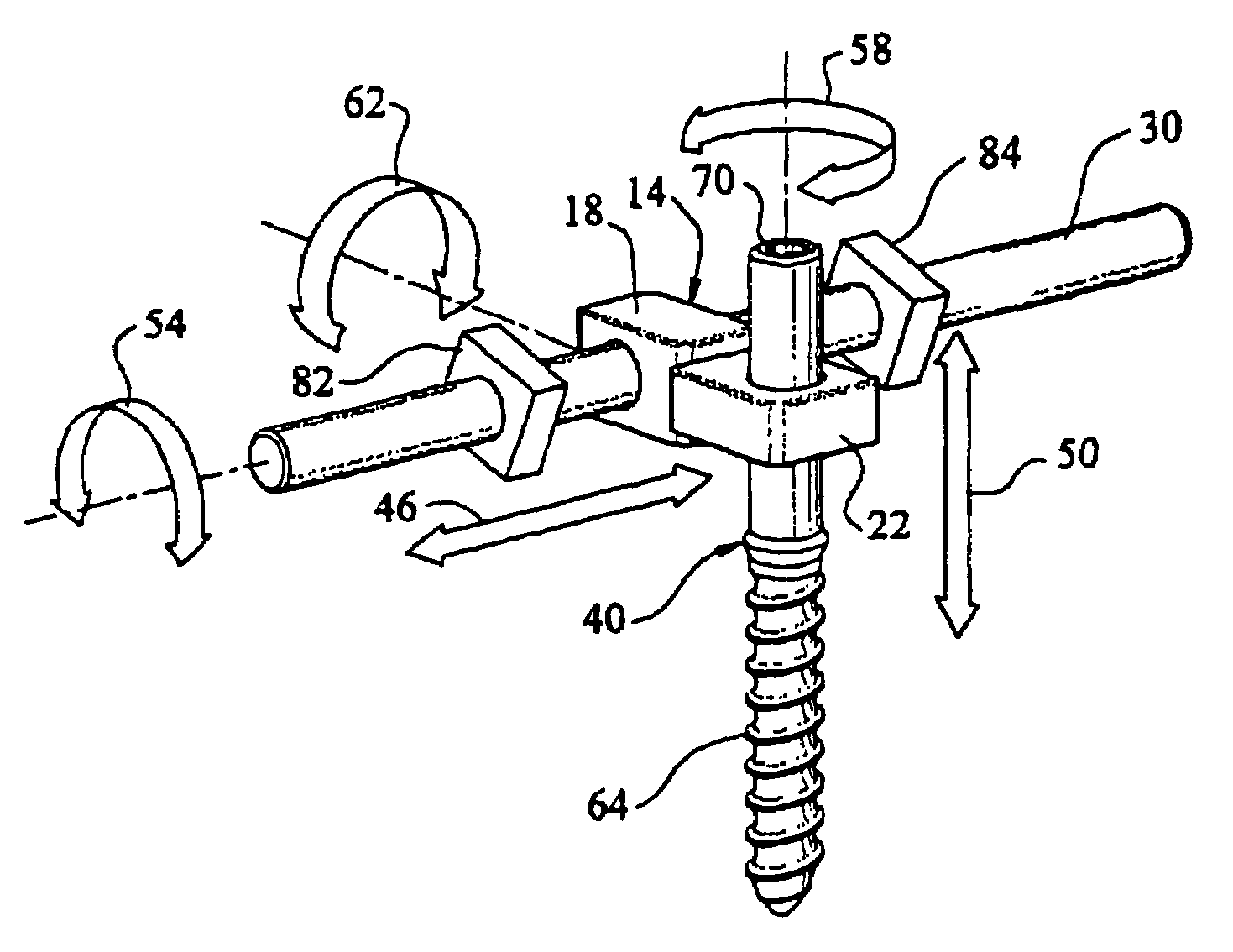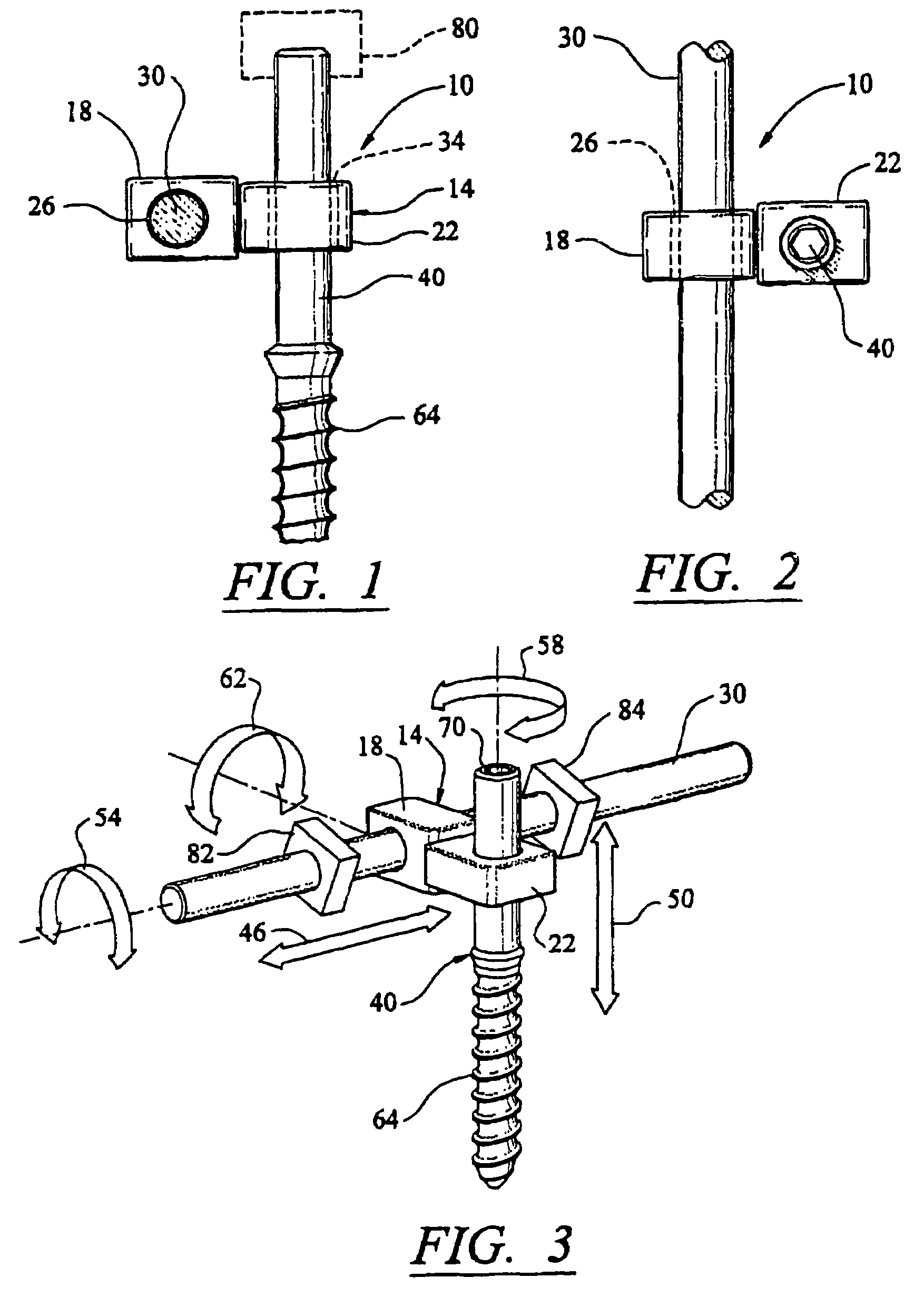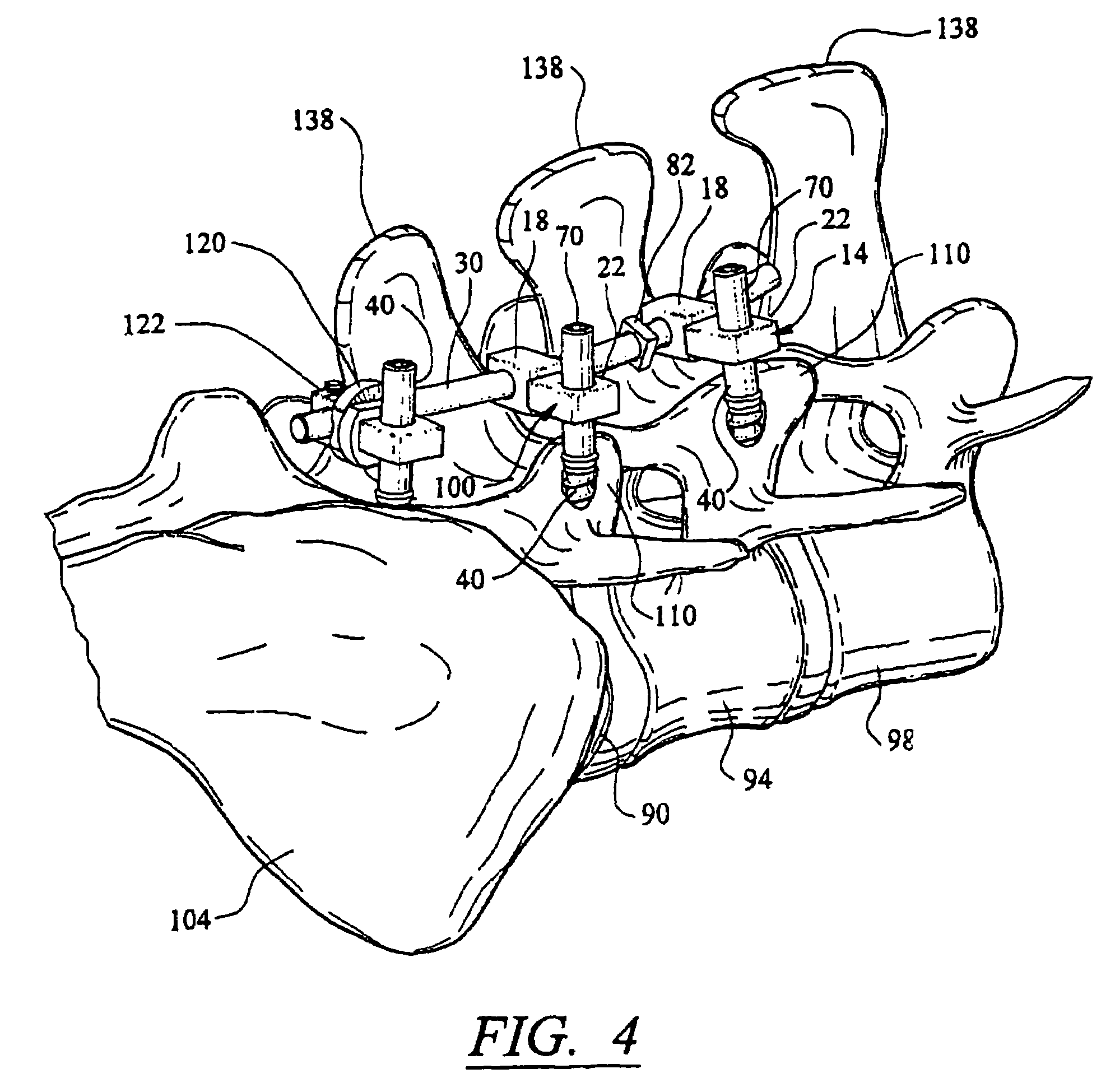Method for creating an artificial facet
a technology of artificial facets and joints, applied in the field of artificial joints, can solve the problems that the artificial facet joints do not provide the rigidity that is necessary to support the spine, and achieve the effect of reducing friction coating and limiting joint movemen
- Summary
- Abstract
- Description
- Claims
- Application Information
AI Technical Summary
Benefits of technology
Problems solved by technology
Method used
Image
Examples
Embodiment Construction
[0044]There is shown in FIGS. 1-3 a connector assembly for an artificial facet joint according to the invention. The connector assembly 10 includes a connector 14 having a first device connecting member 18 and a second device connecting member 22. The first device connecting member 18 has structure for sliding engagement of a spinal implant rod 30. The second device connecting member 22 has structure for sliding engagement of a spinal implant screw 40. The structure for slidably engaging the spinal implant rod 30 can be an aperture 26 for receiving the rod 30. The structure for slidably engaging the spinal implant screw 40 can be an aperture 34 for receiving the screw 40. Other structure is possible. The apertures 26 and 34 can be larger in diameter than the cross-sectional diameter of the rod 38 and screw 40, if desired, to permit movement of the first device connecting member 18 relative to the rod 30 as shown by arrow 46 in FIG. 3, as well as transverse movement to the extent of ...
PUM
 Login to View More
Login to View More Abstract
Description
Claims
Application Information
 Login to View More
Login to View More - R&D
- Intellectual Property
- Life Sciences
- Materials
- Tech Scout
- Unparalleled Data Quality
- Higher Quality Content
- 60% Fewer Hallucinations
Browse by: Latest US Patents, China's latest patents, Technical Efficacy Thesaurus, Application Domain, Technology Topic, Popular Technical Reports.
© 2025 PatSnap. All rights reserved.Legal|Privacy policy|Modern Slavery Act Transparency Statement|Sitemap|About US| Contact US: help@patsnap.com



